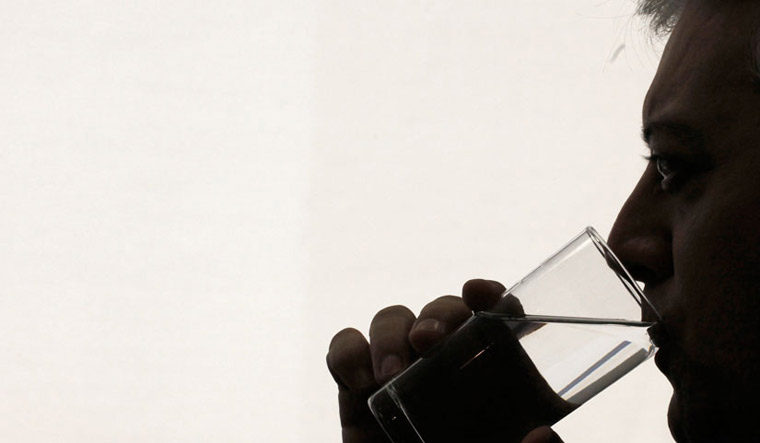As scientists across the world discuss the potential of a saliva-based test for COVID-19, Indian researchers have found another novel, cheaper and patient-friendly alternative to nasal swabs currently used to collect samples for the test.
Now, instead of a lab technician dressed in elaborate PPE gear pushing a long swab up your nose to take a sample, doctors at AIIMS and Translational Health Science and Technology Institute, Faridabad, suggest that you could simply gargle and spit in a cup. Results of a small study published in the Indian Journal of Medical Research compares two sample collection methods— nasal swabs and gargling. The idea behind the study is that gargling can be an effective alternative to nasal swabs which are more expensive, require skilled staff, and cause discomfort to the patient, too.
Among sample collection methods approved for a COVID-19 test, nasal/nasopharyngeal/throat swabs are the most common. “Swab collection has several drawbacks also as it requires training, exposes the healthcare workers (HCWs) to the virus-containing aerosols, has poor patient acceptability and is resource intensive. An alternative sample collection method that could overcome most of these limitations without compromising the yield of the test is the need of the hour,” the authors write in their IJMR article.
Using gargle specimens is not a new technique, but in case of SARS-COV2, not much has been published about this method, the authors state. To assess the suitability of the gargle sample in detecting the virus, doctors at AIIMS chose 50 COVID-positive people. Each of them was given a container with saline, asked to gargle for about 15-20 seconds and spit back into the container. These samples were then compared with the swab ones. The gargle samples were able to detect the virus just as well.
Switching to this method for sample collection will translate to "substantial cost savings" as it would cut down the need for swabs and personal protective equipment (PPE), as well as the need to develop and maintain special infrastructure for swab collection. The authors also cite a study done in Germany, that showed similar advantages of using this method while maintaining accuracy of the test. In the German study, 924 healthcare workers were tested using gargle samples, that helped them save at least 225 PPEs and 1000 swabs.
However, gargling has its disadvantages, too—generation of infectious aerosols—and hence the authors recommend it only for home collection.
“Whether the risk of aerosol generation was similar to swab collection (commonly leads to coughing and sneezing) or higher was not clear. To minimize the risk of transmission due to aerosols and to maximize the benefits of this method of collection, it would be best to employ it for home collection,” the authors state. Also, this method cannot be used in patients who are critically ill as well as in young children or patients who may not be able to gargle, they caution.
The doctors also acknowledge the small size of their study, and the need to test the method with viral isolation platforms other than RT-PCR.


